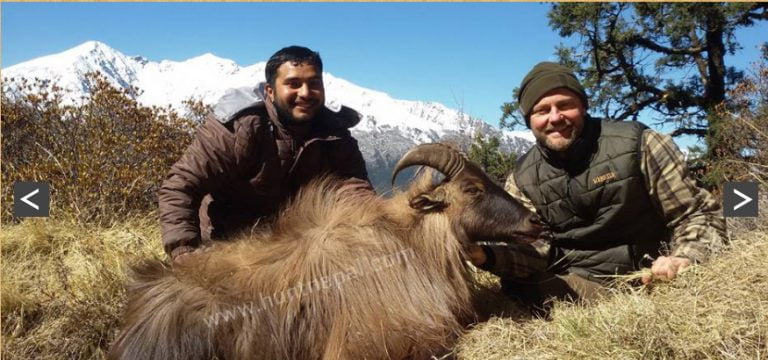
The one and only hunting reserve of Nepal, Dhorpatan hunting reservewas established in 1987 with the primary goal of meeting the demand for hunting and conserving representative species of western Nepal’s temperate, subalpine, and alpine ecosystems. The reserve is 1,352 square kilometers in size and spans the Rukum, Myagdi, and Baglung districts in western Nepal’s Dhaulagiri Himal. The elevation varies between 2,850 and 5,500 meters.
In most cases, hunting and conservation are directly opposed. However, Nepal’s one and only hunting reserve, Dhorpatan Hunting Reserve, proves that conservation can coexist with hunting. In addition to trekking and mountaineering, the reserve provides travelers with the option to try a new adventure.The Dhorpatan Hunting Reserve is Nepal’s only protected area that has been successful in obtaining a hunting license from Kathmandu’s Department of National Parks and Wildlife Conservation.
Except in the north, different villages surround the Dhorpatan Hunting Reserve. The hunting reserve is divided into seven hunting blocks. Each of the four blocks in the southern section and the three blocks in the northern section has its own name. These divisions were created to make hunting more efficient and effective.
Flora and Fauna in Dhorpatan Hunting Reserve: Many animal species can be found at the Dhorpatan Hunting Reserve. The reserve is home to 18 different animal species. Snow leopards, musk deer, red pandas, and blue sheep are among them. The Dhorpatan hunting reserve is home to 137 kinds of birds, including the koklass pheasant, Impeyan pheasant, and cheer pheasant.n addition, the reserve is home to two reptile species. In the Dhorpatan hunting reserve, the blue sheep is the most popular species. Goral, serow, rhesus monkey, Langur, and mouse hare are among the other species. The Dhorpatan hunting reserve is also a habitat for endangered animals such as Musk deer, Wolf, Red Panda, Cheer Pheasant, and Danphe.
Vegetation in Dhorpatan Hunting Reserve: Forests, marshlands (called dhor), and flat meadows (called patan) make up the hunting reserve. Alpine, subalpine, and temperate plants may be found in the reserve. In the upper elevations, snow surrounds the area all year. The reserve has 58 vascular plants. The reserve also has a large number of blooming plant species, including 36 that are indigenous to the area.
Best time to visit: The winters are bitterly cold due to the low temperatures and the fierce winds that blow. With all seasons, the highest altitudes are blanketed in snow. The mornings are overcast, but the wind clears them out through the day, and snow falls until early April. From June through the end of November, the monsoon season begins. As a result, the optimum time to visit the reserve is between March and April.
How to get there: There are buses that will take you from Kathmandu to Tansen. The Dhorpatan Hunting Reserve’s headquarters is a three-day hike from Tansen . Flight is also available from Kathmandu to Pokhara. A four-day hike from Pokhara to the reserve headquarters through Baglung will take you there. On your request, chartered helicopters can also be arranged from Kathmandu to the reserve.
Despite its tiny size, Nepal is one of the few countries that have made significant contributions to biodiversity protection and sustainability. Nepal is home to numerous rare kinds of birds and animals that can only be found in particular places of the world, as well as natural wonders such as mountains and waterfalls.In fact, Nepal has made significant efforts to protect them. National parks, animal reserves, and hunting reserves are examples of biodiversity conservation in Nepal and it feels great to live in a country rich in such bio diversities.
-Article written by: Saru Niraula for Land Nepal